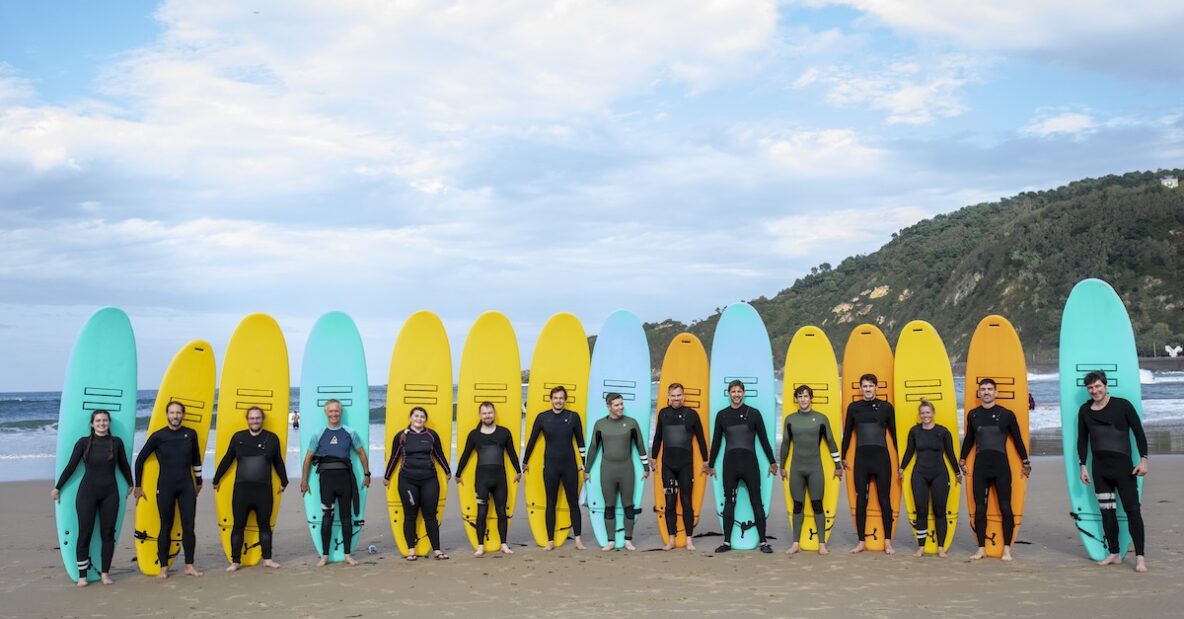17th November 2022
By Andrea Caio
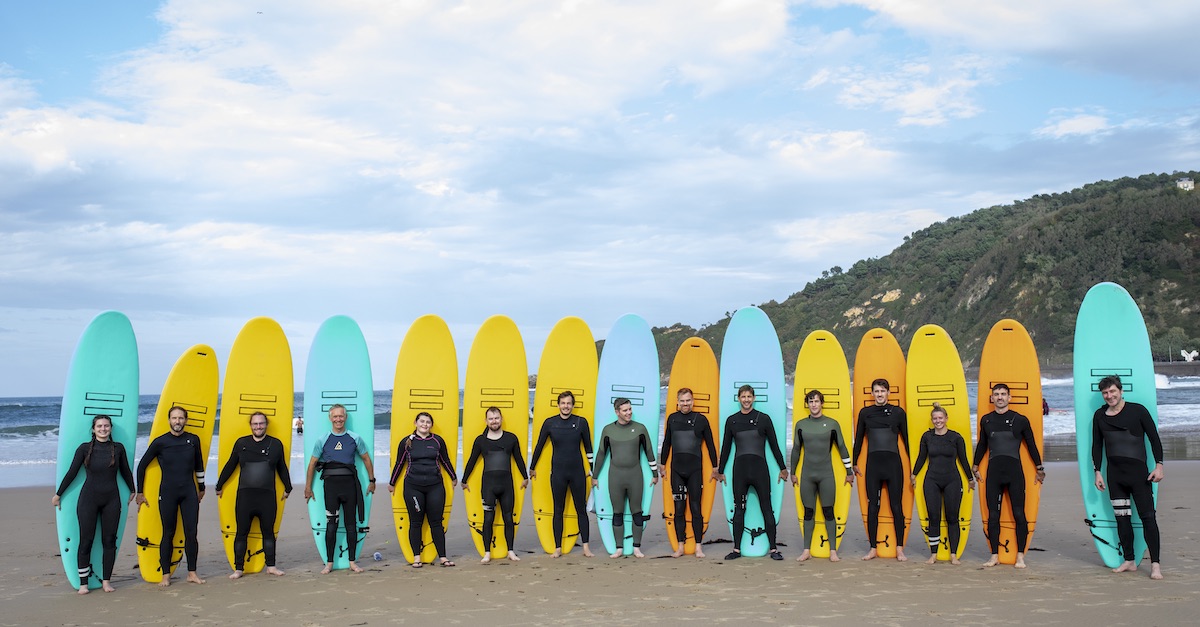
This year’s combined Ocean Energy Europe / International Conference on Ocean Energy brought together the world’s leading ocean energy developers and policy makers to San Sébastian in the Basque Country.
Here, Andrea Caio (Mocean Energy’s Business Development Manager) reflects on a busy programme where themes of collaboration, beachhead markets and commercialisation came to the fore.
The fervent desire to attend every available session in a conference program is by no means a given, nor is the buzz of being once more in the company of motivated ocean energy comrades. It is even rarer to finish a panel discussion, step onto the beach minutes later, don a wetsuit, pick up a surfboard, and personally explore the local wave resource with friends and colleagues at sunset. We could get used to it, and have the Basque city of San Sebastián and the organisers of the OEE-ICOE 2022 conference to thank – eskerrik asko or ‘thank you very much!’ as they say in Basque!
Last week, Mocean Energy was on display with its peers during two programmed sessions: Towards EuropeWave Phase 2 (where we discussed our Blue Horizon 250 WEC), and a Technology Showcase (where we shared lessons from our Blue X deployment). From these and others, three prominent themes emerged: the significance of metrics, the conception and communication of value, and the need for greater collaboration.
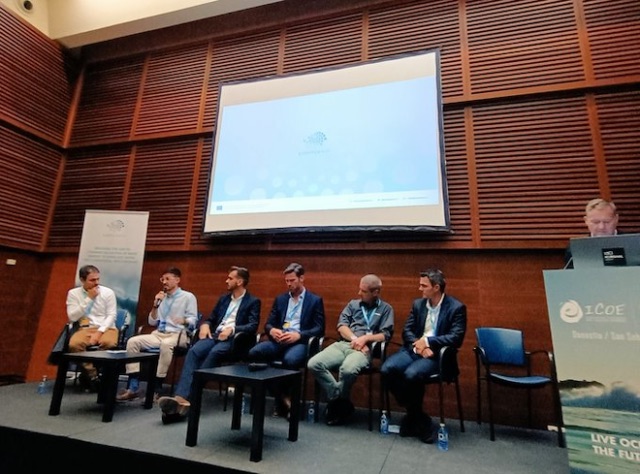
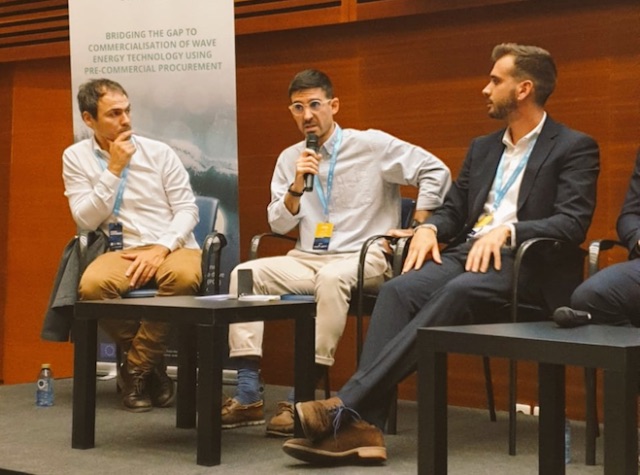
The EuropeWave session demonstrated how the recently consolidated IEA-OES metrics[1] have been widely adopted by participating developers; a welcome step to more coherent industry progression. For one, this facilitates alignment with external stakeholders (e.g. funders), who can now ‘speak the same language’ as developers, but also aids the tracking of technology development internally. Through programs like EuropeWave – and previously Wave Energy Scotland’s NWEC[2] – Mocean Energy has welcomed the opportunity for objective competitive assessment. These opportunities are as rare as they are valuable. Just as investors struggle to pick a winner among numerous WEC developers (if indeed a winner is appropriate for the wave sector, given its underlying differences with e.g. the wind sector), so can developers struggle to gauge where they stand with respect to one another. Common metrics can facilitate this.
The sharing of lessons learned – a focus of this session – goes hand in hand with this intent. As an industry, it seems we do not naturally lean towards open dialogue. This picture is not always accurate, but is accurate too often. It is true that in some cases we are competing for the same funding – and competition is generally a healthy sign for the industry. But we are also driving each other to innovate, for which we continue to need greater peer collaboration: one that is not mired by a fear that “only a few will make it”, but built on the awareness that siloing our efforts brings risks to all. In this sense, the emergence of industry champions can only be good news to inspire confidence in the sector.
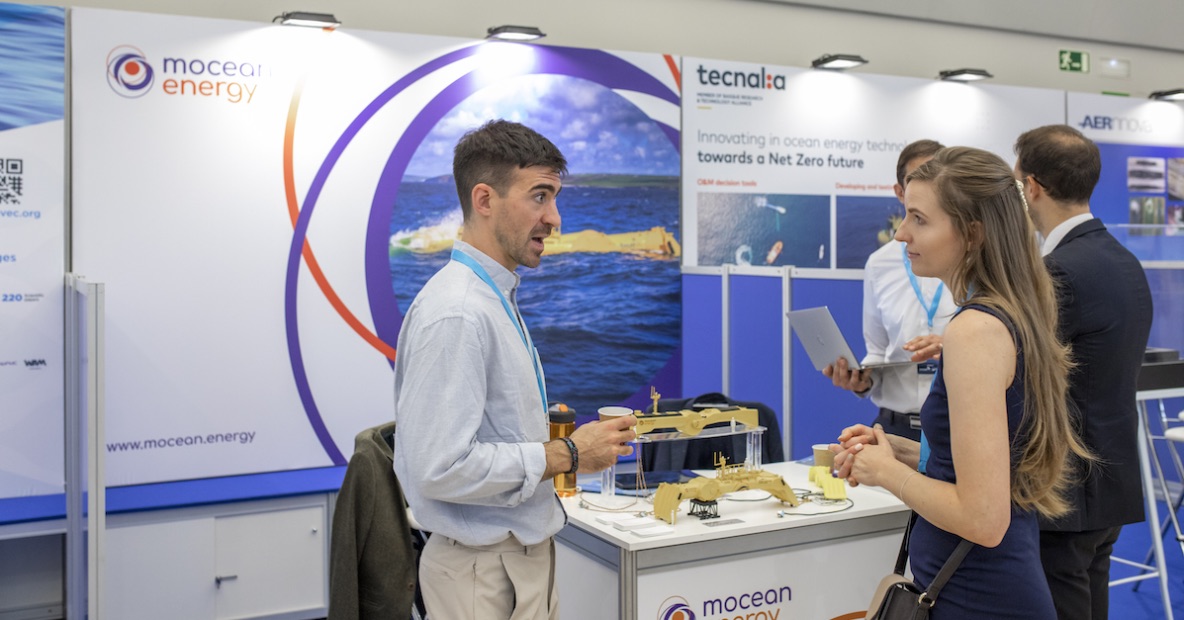
Interestingly, participating EuropeWave developers presented varied device scales, timelines, and commercialisation plans for Phase 3 and beyond; some are directly aiming for utility-scale markets with large MW rated devices, while others are looking to step there via 100s of kW rated WECs with off-grid use cases. Whatever the pathway, commercialisation plans will have to crystallise heading into Phase 3 – keep an eye out! Indeed, though metrics consolidation is positive, the success thresholds in each evaluation area and at each successive development stage are still nebulous. Not least because many are likely to vary across different target markets; what is ‘good enough’ will ultimately come from the stakeholders, and will depend upon the specific application, location, and end-use. Who are we building this for? What is attractive about it? This brings us swiftly to the theme of wave energy’s value, and its close cousin: markets.
Value is often exclusively reflected by cost; there is no explicit value on learning. However, to reduce costs and increase learning, one has to deploy. So how to break the cycle? Despite the lingering tendency within the sector to refer to non-utility markets as niche – a not so helpful framing for potential funders and investors – a clear need for more data remains, the most valuable type coming from putting ‘steel in the water’. Mocean’s approach of learning-by-doing, via its “small-mid-grid” roadmap, aims to accelerate this very process. Markets across the Blue Economy (such as islands & remote communities) are in fact sizeable, worth 10s of billions of Euros globally. They are neither alternative (they facilitate utility deployment in the longer term), nor emerging (they are well-established, albeit still growing). At Mocean, we prefer to use the term off-grid, or beachhead to describe them.
But “so what?”, one may ask. Well, if solar was first deployed for use in space missions in the 50s, it wasn’t until the 70s that it became efficient and affordable enough to be considered for use on Earth[3] – and this efficiency and affordability emerged after considerable NASA and international research funding[4]. Even then, it was initially used to power individual domestic items such as refrigerators, before its more recent and wider adoption as a grid-connected resource. Is it such a leap, therefore, to envision wave energy delivering local off-grid power in Blue Economy sectors before stepping up to grid-scale?
The second session also evidenced that the primacy of levelised cost of energy (LCOE), as an indicator of value, is beginning to dispel. Although minimising LCOE should remain a key target, its alleviation is generally good news. Considering the somewhat outdated energy ‘trilemma’[5] – describing the tension between energy security, environmental impact, and affordability – it is clear that the collective conception of value has thus far been skewed towards affordability. However, global trends may soon correct this. Energy system shocks, whether environmental (droughts, hurricanes, etc.) or political (war in Eastern Europe), are evidencing the need for greater energy security and grid flexibility. Diverse and local energy sources of electrons are key to these requirements; this is where wave energy can crucially contribute. Projects like EVOLVE[6] play a key role – e.g. illustrating how wave energy can command twice the value of wind energy when the wind is not blowing. Ironically, a diversified and more resilient system is likely to make energy also more affordable in the long run.
Ultimately, a healthy industry requires: technology, projects, pipeline, and funding (public and private). All of these ideally need to align at the same time. So what are we missing as a sector? Not so much technology; it feels like we have cracked the ‘up to full-scale prototype’, though demonstration of WEC arrays is still a ways off. More so the latter three. We also need data. How do we get it? Two potential pathways are at-sea deployments and large scale hybrid testing – see, for example, the IMPACT[7] project. From a public perspective, a mix of innovation funding and revenue support will be essential to scale up to initial arrays, as well as funding to reduce the cost of money and capital needed. We also need more sharing of risk at the international level, with funding available across more risk profiles. Ambitious targets and ORE strategy are the right signals, but these then have to be delivered. Private funding comes into the fray here.
In one of the closing sessions, the head of OEE posed the question, “what would you, as participants of the conference, need?”. Broader engagement and reducing the echo chamber tendency of conferences such as OEE would help. On a more practical level, can we involve stakeholders (including potential private funders) in funding programmes such as EuropeWave in the future? This would help them to gain an inside view and understand the sector more, as well as help developer growth – not easy, but we do need to take them (investors, go-to-market partners, potential customers, etc.) along with us. Technology Readiness Level (TRL) is generally high enough now, momentum and interest is on the rise – yet investment somehow still feels elusive.
The Chair of OES closed the final session with a call to “less talk, more action”. Borrowing the words of wave energy pioneer Stephen Salter: “apparent simplicity often turns out to be the extent to which difficulties can be hidden”[8]. The reality is more nuanced; we do need action, but action that is not disjointed and scattered across soloed efforts. If there is one thing we take away from the week is that: how we talk and communicate – in the industry and outside it – is just as important as our ever growing technical achievements. Positivity is great, but it needs to be boosted with an appropriate amount of realism. We have more challenges to solve as a sector, together.
Big Wave Surfer Sebastian Steudtner, who broke the world record for the highest wave surfed at a terrifying 26.21m and who visited on the first day of the conference said, “there’s always another more challenging wave to come”. At Mocean Energy, we’re ready for it!
[1] According to 9 Evaluation Framework Areas, specified in J. Hodges et al. (2021). International Evaluation and Guidance Framework for Ocean Energy Technologies. IEA-OES.
[2] https://www.waveenergyscotland.co.uk/programmes/details/novel-wave-energy-converter/
[3] https://science.howstuffworks.com/innovation/nasa-inventions/5-green-nasa-inventions.htm#:~:text=5%3A%20Pushes%20in%20Solar%20Power,on%20the%20International%20Space%20Station.&text=Researchers%20at%20NASA%20didn’t,it%20was%20still%20largely%20uneconomical.
[4] https://solargaps.com/the-history-of-solar-technology-from-photovoltaic-invention-to-space-travel-and-solar-blinds/
[5] https://www.worldenergy.org/transition-toolkit/world-energy-trilemma-index
[6] https://evolveenergy.eu/
[7] https://www.impact-h2020.eu/
[8] S. Salter (2005) – A Personal View of Renewable Marine Energy. (Wave and Tidal Technologies Symposium)

